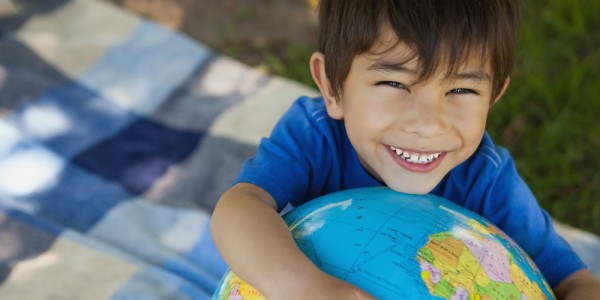As a former adoption professional serving as Executive Director of Joint Council on International Children’s Services and as the former Program Director for the Congressional Coalition on Adoption Institute I dealt with some of the most difficult situations surrounding corruption in the adoption process. Joint Council on International Children’s Services was founded to ensure that every child realized their right to a forever family. When people claim that the adoption process is corrupt, they need to see the effort that goes into each journey. We work to ensure every adoption is safe, ethical, and transparent and that the children placed to meet the stringent definition of an orphan.
However, before the ratification of The Hague Convention on the Protection of Children and Co-operation in Respect of Intercountry Adoption on April 1, 2008, many referred to the adoption process, specifically intercountry adoption, as the wild west. Many journalists and child welfare advocates documented fraud and abuse in the adoption process. The Schuster Institute for Investigative Journalism at Brandeis University published a plethora of research on the problem of fraud and abuse shortly after the Convention went into force. Since the height of intercountry adoptions in 2004, unethical agencies have been closed, unscrupulous adoption professionals have been incarcerated, and the United States government closed intercountry adoptions with countries such as Cambodia and Guatemala. Individuals not intimately familiar with adoption were plagued with articles showcasing the corruption and many parents chose not to pursue intercountry adoption for their family.
So, with all of that being said, how do you respond to individuals who say the adoption process is corrupt. They read stories of fraud and corruption and thus believe the entire process of adoption is wrong.
As the saying goes, sunlight is the best disinfectant. Also, it is important to understand that the media will shine a light on the stories getting the most attention, but often it is only one sensationalized side of the story. Elizabeth Bartholet, director of the Child Advocacy Program at Harvard Law School and a parent of two children from Peru whom she adopted in the 1980s said it best, “In every human endeavor, there is a chance for abuse, but if a plane goes down, they don’t ground the whole airline industry…the only institution I can think of that when there’s a problem, they shut it down, is international adoption.”
There are 140 million children in the world without the love and protection of a forever home. These children are the most vulnerable, the most marginalized population of people in the world. Yes, there were instances of terrible abuse and fraud within adoption, but it is not the whole story. Hundreds of thousands of children have realized their basic human right of having a forever family since the first documented instances of adoption took place. These children would have spent their lives in institutions, or worse, on the streets or as slaves, child soldiers, sex workers, or left to survive on their own. Most of the children who have been placed in families have received the love and protection of a good, loving forever family. Their lives were forever changed through transparent, ethical adoption. Organizations like Joint Council and those that still thrive in their steads like the Congressional Coalition on Adoption Institute and the National Council for Adoption work tirelessly for ethical adoptions. The Hague Convention, even with all of its flaws, was implemented to ensure that children who were placed in families through intercountry adoption, meet the definition of an orphan.
The United States government under the Obama Administration worked tirelessly through USAID and the Department of State to implement policy and strategies to promote ethical permanency solutions for children. The Action Plan on Children in Adversity is the first-ever whole-of-government strategic guidance for U.S. Government international assistance for children, with its stated goal to achieve a world in which all children grow up in protective family care and free from deprivation, exploitation, and danger. As a former member of CAPP, the Children in Adversity Policy Partnership, I would meet with other child welfare professionals from organizations to promote permanency for all children. We recognized that permanency meant that intercountry adoption was one of the last options a government and child welfare professionals should pursue in ensuring permanency for any child. The priority was reunification with the birth family, domestic adoption, and finally international adoption. Many agencies and child welfare organizations continue to work to ensure that families in-country receive the resources they need to keep their children in their immediate or extended family.
Adoption is still not perfect. It never will be. It also does not mean we need to give up adoption altogether. If people believe that the adoption process is corrupt, they need to see how much good it does for families. Best practices have evolved over human history to ensure the best interests of the child. We continue to strive toward policies in the U.S. and abroad that protect and promote children growing up in families. Adoption still serves and will always serve as an important option for children without families.
Considering adoption? Let us help you on your journey to creating your forever family. Visit Adoption.org or call 1-800-ADOPT-98.

